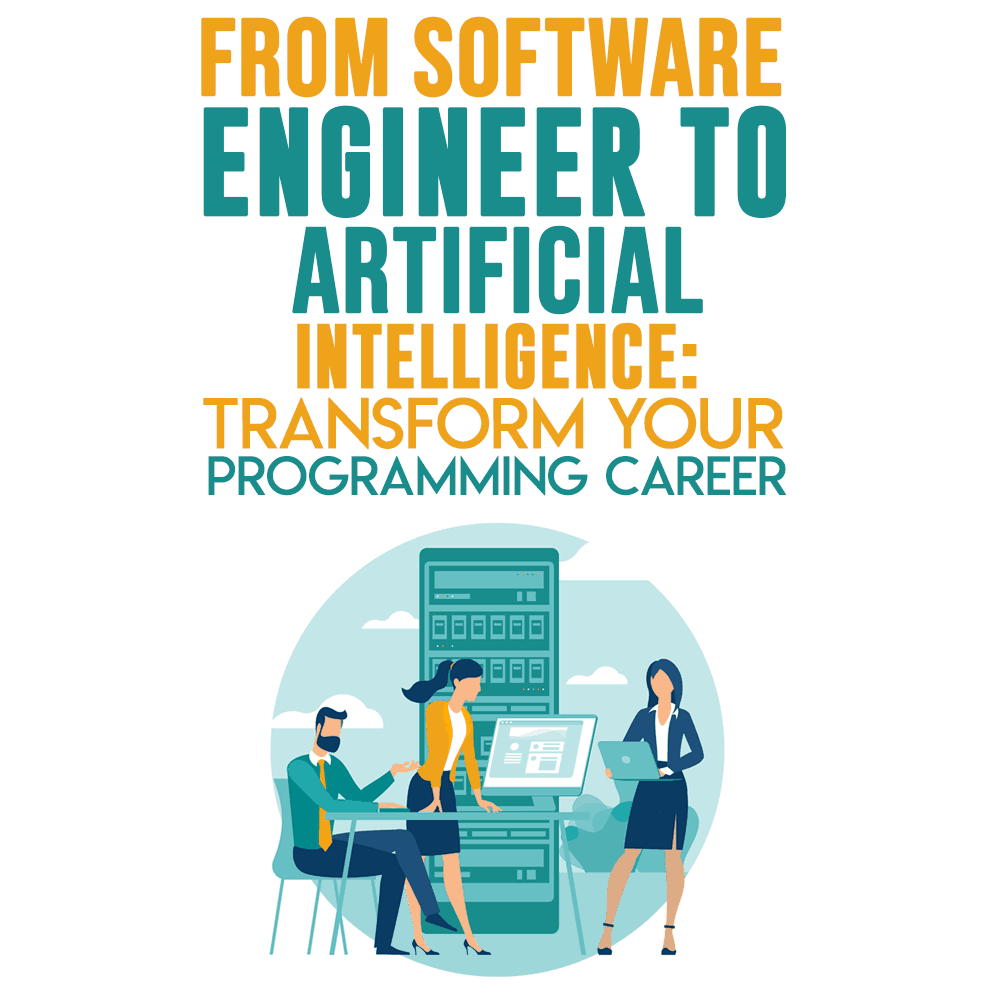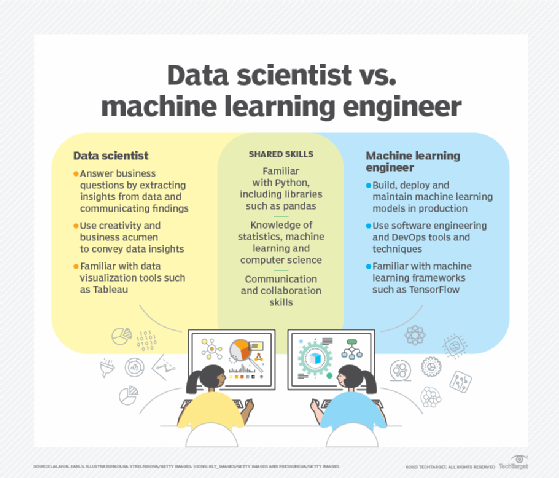All Categories
Featured
Table of Contents
On the various other hand, ML engineers specialize in structure and deploying artificial intelligence models. They concentrate on training versions with data to make forecasts or automate tasks. While there is overlap, AI designers take care of more diverse AI applications, while ML engineers have a narrower focus on machine understanding algorithms and their useful implementation.
Maker discovering designers concentrate on establishing and deploying artificial intelligence models right into production systems. They work on engineering, making sure versions are scalable, reliable, and integrated into applications. On the various other hand, information scientists have a more comprehensive duty that includes data collection, cleansing, expedition, and structure designs. They are typically responsible for extracting insights and making data-driven choices.
As companies progressively take on AI and maker understanding innovations, the demand for proficient professionals expands. Artificial intelligence designers service advanced projects, add to technology, and have competitive salaries. Success in this area needs continual knowing and keeping up with developing technologies and strategies. Artificial intelligence duties are generally well-paid, with the capacity for high earning possibility.
ML is essentially various from typical software advancement as it concentrates on training computers to gain from data, instead of shows explicit policies that are implemented methodically. Uncertainty of results: You are possibly made use of to creating code with predictable outputs, whether your function runs when or a thousand times. In ML, nevertheless, the outcomes are less specific.
Pre-training and fine-tuning: Exactly how these versions are trained on vast datasets and then fine-tuned for certain jobs. Applications of LLMs: Such as message generation, sentiment evaluation and info search and retrieval.
What Do I Need To Learn About Ai And Machine Learning As ... Fundamentals Explained
The capacity to manage codebases, merge modifications, and solve conflicts is equally as essential in ML growth as it is in conventional software jobs. The abilities established in debugging and screening software applications are extremely transferable. While the context could alter from debugging application reasoning to identifying concerns in information handling or model training the underlying principles of organized examination, theory testing, and repetitive refinement are the exact same.
Artificial intelligence, at its core, is greatly dependent on data and possibility theory. These are vital for comprehending how algorithms discover from data, make forecasts, and review their efficiency. You need to think about becoming comfy with concepts like statistical relevance, circulations, theory screening, and Bayesian thinking in order to layout and interpret versions effectively.
For those curious about LLMs, a detailed understanding of deep learning architectures is helpful. This consists of not only the mechanics of neural networks yet likewise the architecture of certain designs for different usage situations, like CNNs (Convolutional Neural Networks) for photo processing and RNNs (Persistent Neural Networks) and transformers for consecutive data and natural language processing.

You should know these concerns and find out techniques for determining, reducing, and interacting concerning bias in ML models. This consists of the potential effect of automated choices and the honest effects. Lots of models, particularly LLMs, call for significant computational sources that are usually given by cloud systems like AWS, Google Cloud, and Azure.
Building these skills will not only assist in a successful shift right into ML yet additionally make sure that designers can contribute successfully and responsibly to the development of this dynamic field. Theory is crucial, yet nothing beats hands-on experience. Beginning dealing with tasks that allow you to apply what you've discovered in a sensible context.

Take part in competitors: Join platforms like Kaggle to join NLP competitions. Build your projects: Start with straightforward applications, such as a chatbot or a message summarization tool, and slowly enhance complexity. The field of ML and LLMs is rapidly developing, with new innovations and modern technologies arising routinely. Staying updated with the most recent study and trends is vital.
Some Known Questions About Ai And Machine Learning Courses.
Contribute to open-source tasks or create blog site articles concerning your knowing trip and projects. As you get knowledge, begin looking for opportunities to include ML and LLMs into your work, or seek brand-new functions concentrated on these innovations.
Vectors, matrices, and their role in ML algorithms. Terms like model, dataset, features, labels, training, inference, and recognition. Data collection, preprocessing techniques, model training, evaluation processes, and deployment factors to consider.
Decision Trees and Random Forests: Instinctive and interpretable versions. Matching issue types with proper designs. Feedforward Networks, Convolutional Neural Networks (CNNs), Reoccurring Neural Networks (RNNs).
Data flow, improvement, and function design strategies. Scalability concepts and performance optimization. API-driven strategies and microservices combination. Latency monitoring, scalability, and version control. Constant Integration/Continuous Release (CI/CD) for ML workflows. Design tracking, versioning, and performance monitoring. Spotting and addressing adjustments in version performance with time. Attending to performance traffic jams and source monitoring.
The Software Developer (Ai/ml) Courses - Career Path PDFs
Course OverviewMachine knowing is the future for the next generation of software application experts. This program functions as an overview to artificial intelligence for software designers. You'll be presented to 3 of the most appropriate components of the AI/ML discipline; managed understanding, semantic networks, and deep understanding. You'll realize the distinctions in between traditional programs and device learning by hands-on development in supervised understanding prior to developing out complicated dispersed applications with semantic networks.
This training course functions as an overview to machine lear ... Show More.
The ordinary ML workflow goes something such as this: You require to recognize the company issue or goal, prior to you can attempt and resolve it with Artificial intelligence. This usually means research and partnership with domain name degree professionals to define clear goals and demands, as well as with cross-functional teams, consisting of information scientists, software designers, item supervisors, and stakeholders.
: You select the best model to fit your goal, and afterwards train it utilizing libraries and structures like scikit-learn, TensorFlow, or PyTorch. Is this functioning? A crucial part of ML is fine-tuning designs to obtain the desired outcome. So at this stage, you evaluate the efficiency of your chosen device finding out model and then make use of fine-tune version criteria and hyperparameters to improve its efficiency and generalization.
Does it proceed to work now that it's real-time? This can likewise suggest that you upgrade and re-train versions consistently to adapt to altering information circulations or company needs.
Examine This Report on How To Become A Machine Learning Engineer - Uc Riverside

Device Understanding has blown up in recent years, thanks in part to developments in information storage space, collection, and calculating power. (As well as our desire to automate all the things!).
That's just one task publishing internet site additionally, so there are also much more ML tasks out there! There's never ever been a far better time to get into Equipment Understanding.
Below's the important things, technology is just one of those markets where some of the largest and finest individuals in the globe are all self instructed, and some also freely oppose the idea of individuals obtaining an university level. Mark Zuckerberg, Expense Gates and Steve Jobs all went down out before they got their degrees.
The Only Guide for How To Become A Machine Learning Engineer In 2025
Being self showed really is less of a blocker than you probably believe. Particularly due to the fact that nowadays, you can learn the crucial elements of what's covered in a CS degree. As long as you can do the job they ask, that's all they actually respect. Like any type of new ability, there's absolutely a finding out contour and it's going to really feel tough at times.
The main distinctions are: It pays remarkably well to most various other jobs And there's a recurring understanding component What I indicate by this is that with all technology duties, you have to stay on top of your video game to ensure that you know the present skills and adjustments in the sector.
Kind of simply exactly how you may discover something brand-new in your existing task. A great deal of people that work in tech really enjoy this due to the fact that it indicates their task is constantly changing slightly and they enjoy finding out new things.
I'm going to point out these skills so you have an idea of what's required in the work. That being claimed, an excellent Artificial intelligence training course will instruct you mostly all of these at the same time, so no demand to stress and anxiety. Some of it might also appear challenging, however you'll see it's much less complex once you're applying the concept.
Latest Posts
The Best Courses For Machine Learning Interview Preparation
How To Negotiate A Software Engineer Salary After A Faang Offer
Tips For Acing A Technical Software Engineering Interview